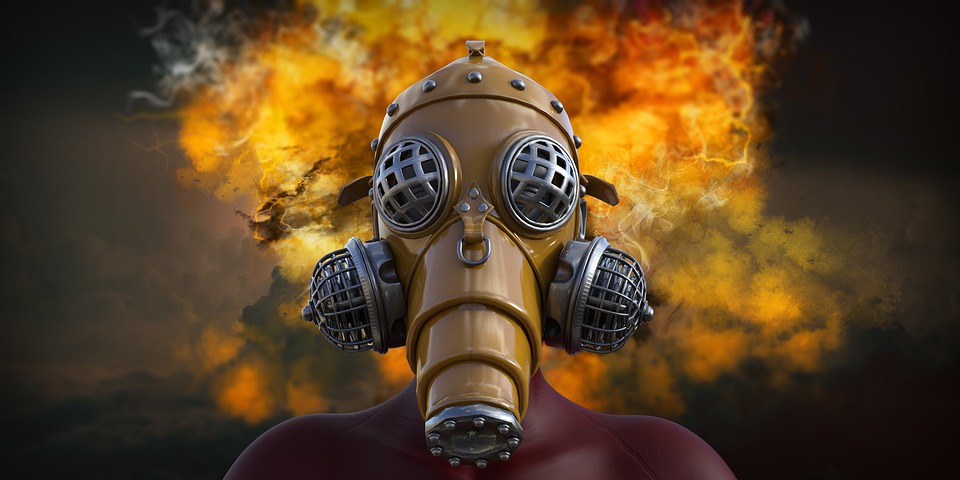NATO Generals Express Concerns Over Potential Russian Nuclear Strike
Recent statements from NATO generals have raised alarms about the possibility of Russian President Vladimir Putin considering a first nuclear strike. Tensions between NATO member states and Russia have been escalating, leading to increased scrutiny and concern among military leaders and policymakers. While the probability of a nuclear conflict remains uncertain, the potential consequences underscore the importance of diplomatic efforts and international cooperation to prevent such a catastrophic event.
Background:
The North Atlantic Treaty Organization (NATO) is a military alliance comprising 30 member countries committed to collective defense. Russia, under President Vladimir Putin, has often been at odds with NATO over geopolitical issues, territorial disputes, and regional conflicts. The annexation of Crimea in 2014 and ongoing tensions in Eastern Europe have strained relations between NATO and Russia.
Recent Statements and Warnings:
NATO generals have expressed growing concerns over Russia’s aggressive posture and the potential for Putin to contemplate a first nuclear strike. While such statements are rare and typically reserved for extreme circumstances, the current geopolitical climate has prompted military leaders to address the possibility openly. The warnings emphasize the need for international dialogue and conflict resolution to avoid a devastating nuclear confrontation.
Reasons Behind the Concerns:
- Military Buildup: NATO has observed significant Russian military buildups near its borders, raising suspicions about Moscow’s intentions. The deployment of advanced missile systems, increased military exercises, and strategic positioning of forces have fueled anxiety among NATO member states.
- Modernization of Nuclear Arsenal: Russia has been investing heavily in modernizing its nuclear arsenal, developing advanced weapons systems capable of evading existing missile defense mechanisms. These advancements have contributed to the perception that Russia may be preparing for a more assertive role on the global stage, potentially including the use of nuclear weapons.
- Aggressive Rhetoric: President Putin’s rhetoric, both domestically and internationally, has become increasingly assertive. Statements emphasizing Russia’s nuclear capabilities and willingness to use them under certain circumstances have added to the apprehension among NATO officials.
International Response:
In response to these concerns, NATO member states and other global actors have called for renewed diplomatic efforts to de-escalate tensions and address the root causes of the conflict. International organizations, such as the United Nations, are actively involved in facilitating dialogues to prevent the situation from escalating into a full-blown crisis.
The Importance of Diplomacy:
Diplomacy remains the primary avenue for resolving conflicts and preventing the use of nuclear weapons. Engaging in open and transparent communication channels, promoting dialogue, and finding common ground is essential to defuse tensions and prevent any inadvertent escalation.
Surviving a Nuclear Strike: A Comprehensive Guide to Emergency Preparedness”
The thought of a nuclear strike is undoubtedly a terrifying prospect, but being prepared can make a significant difference in increasing your chances of survival. While we hope such an event never occurs, it’s essential to have a plan in place to safeguard yourself and your loved ones.
- Stay Informed: One of the most critical aspects of surviving a nuclear strike is staying informed. Keep a battery-powered radio on hand to receive emergency broadcasts. Follow official channels and updates from government agencies to get accurate and timely information regarding the situation, fallout patterns, and evacuation procedures.
- Seek Shelter Immediately: The initial impact of a nuclear strike is devastating, but the aftermath poses significant risks due to radioactive fallout. The best course of action is to seek shelter as quickly as possible. Identify and designate a fallout shelter in advance – this could be a basement, underground facility, or a reinforced structure that protects from radiation.
- Create an Emergency Kit: Prepare a well-stocked emergency kit that includes essential supplies to sustain yourself and your family for an extended period. This kit should include items such as non-perishable food, water, first aid supplies, a flashlight, batteries, hygiene products, medications, and important documents. Keep the kit in your designated fallout shelter for easy access.
- Evacuation Plans: If you’re in an area with a higher risk of being directly affected by a nuclear strike, have evacuation plans in place. Familiarize yourself with designated evacuation routes, assemble a “go bag” with essential items, and communicate with family members about the evacuation plan. Ensure that you have a reliable mode of transportation available.
- Minimize Exposure: In the aftermath of a nuclear strike, limit your exposure to radioactive fallout. If you are caught outdoors during the incident, find shelter as quickly as possible. If you must go outside, cover your mouth and nose with a mask, and wear protective clothing to reduce exposure to radioactive particles.
- Decontamination: After seeking shelter, practice decontamination measures to minimize the risk of radiation exposure. Remove outer layers of clothing, wash exposed skin thoroughly with soap and water, and take necessary precautions to avoid ingestion or inhalation of contaminated particles.
- Follow Authorities’ Instructions: Government authorities will play a crucial role in managing the aftermath of a nuclear strike. Follow their instructions diligently, whether it’s regarding evacuation orders, medical treatment, or other safety measures. Authorities will provide guidance based on the specific circumstances of the incident.
While the prospect of a nuclear strike is unnerving, preparedness can make a significant difference in increasing the chances of survival. Stay informed, seek shelter immediately, create an emergency kit, have evacuation plans in place, minimize exposure, practice decontamination, and follow authorities’ instructions. By taking these measures, you can enhance your resilience in the face of such a catastrophic event. Remember, preparedness is the key to survival.
What Foods Should a Person Stock Up On
When preparing for emergencies, including the possibility of a nuclear strike or any other disaster, it’s crucial to stock up on non-perishable and easily storable foods that provide essential nutrients.
Here’s a list of food items to consider including in your emergency stockpile:
- Canned Goods:
- Canned vegetables and fruits
- Canned beans and legumes
- Canned meats (tuna, chicken, salmon)
- Canned soups and stews
- Dry Goods:
- Rice
- Pasta
- Lentils
- Quinoa
- Oats
- Grains:
- Whole grains such as barley, bulgur, and farro
- Instant rice or couscous for quick preparation
- Proteins:
- Dried beans
- Lentils
- Nuts and seeds
- Nut butters
- Beef jerky or other dried meats
- Dairy and Alternatives:
- Shelf-stable milk or plant-based milk alternatives
- Powdered milk
- Shelf-stable cheese or cheese spreads
- Fruits and Vegetables:
- Dehydrated or freeze-dried fruits and vegetables
- Canned fruits in water or natural juice
- Fruit and vegetable pouches
- Beverages:
- Bottled water (1 gallon per person per day for at least three days)
- Electrolyte drinks or powders
- Instant coffee or tea bags
- Snacks:
- Granola bars
- Trail mix
- Dried fruit
- Crackers
- Popcorn
- Comfort Foods:
- Chocolate or other treats for morale
- Instant pudding or gelatin cups
- Special Dietary Needs:
- Consider any dietary restrictions or special needs for infants, elderly family members, or individuals with specific health conditions.
Remember to check expiration dates regularly and rotate your stock to ensure that your emergency food supply remains fresh. Additionally, include a manual can opener if you have canned goods. Keep in mind the nutritional needs of all family members, and consider including a multivitamin supplement in your emergency kit.
It’s essential to be mindful of individual preferences and dietary restrictions when building your emergency food supply. While non-perishable and long-lasting options are crucial, having a variety of foods that you enjoy can help maintain morale during challenging times.
What Essentials Other Than Food Should One Stock Up On?
In addition to food, there are several other essentials that one should stock up on when preparing for emergencies like a nuclear strike or any other disaster. These items will help ensure the well-being, safety, and comfort of you and your family.
Here’s a list of essential items to consider including in your emergency preparedness kit:
- Water:
- One gallon of water per person per day for at least three days.
- Water purification tablets or filters in case fresh water becomes scarce.
- First Aid Kit:
- Bandages, gauze, and adhesive tape
- Antiseptic wipes or solution
- Pain relievers
- Prescription medications
- Tweezers and scissors
- First aid manual
- Hygiene and Sanitation:
- Soap and hand sanitizer
- Toothbrushes and toothpaste
- Feminine hygiene products
- Diapers and baby wipes (if applicable)
- Trash bags and plastic ties for waste disposal
- Moist towelettes
- Clothing and Bedding:
- Sturdy and comfortable clothing suitable for the climate
- Blankets or sleeping bags
- Rain ponchos or jackets
- Extra socks and underwear
- Shelter and Warmth:
- Tents or tarps
- Emergency thermal blankets
- Hand warmers
- Sleeping pads or air mattresses
- Lighting:
- Flashlights with extra batteries
- LED lanterns or headlamps
- Candles and waterproof matches
- Communication:
- Battery-powered or hand-crank radio for emergency updates
- Portable chargers for electronic devices
- Whistle for signaling
- Tools and Equipment:
- Multi-tool or utility knife
- Duct tape
- Rope or paracord
- Work gloves
- Important Documents:
- Copies of identification (passport, driver’s license)
- Insurance policies and medical records
- Emergency contact information
- USB drive with digital copies of important documents
- Cash:
- Small denominations of cash in case electronic transactions are unavailable.
- Entertainment and Comfort:
- Books, games, or other forms of entertainment for morale
- Comfort items for children
- Personal Protection:
- Face masks
- Gloves
- Personal hygiene items (e.g., hand sanitizer)
Remember to customize your emergency kit based on the specific needs of your household, including any unique requirements for infants, elderly family members, or individuals with specific health conditions. Regularly review and update your kit to ensure that supplies remain in good condition and are within their expiration dates.
Conclusion:
While the possibility of a first nuclear strike by Russia remains a cause for concern, the international community must prioritize diplomatic solutions over military confrontations. The stakes are too high, and the potential consequences too catastrophic, to allow tensions to escalate further. As global leaders work towards finding common ground, it is essential to maintain open lines of communication and seek peaceful resolutions to avoid a devastating conflict that could have far-reaching consequences for the entire world.
Further Reading:
- NATO generals warn Putin could be on the verge for a first nuclear strike – London Business News | Londonlovesbusiness.com
- Nuclear emergencies: information for the public – GOV.UK (www.gov.uk)
#nuclearwar #nuclearstrike #nato #nucleardisaster #nuclearfallout #worldwarIII #war #stockpile #essentials #catastrophy #peace #thingstodo #knowwhattodo



